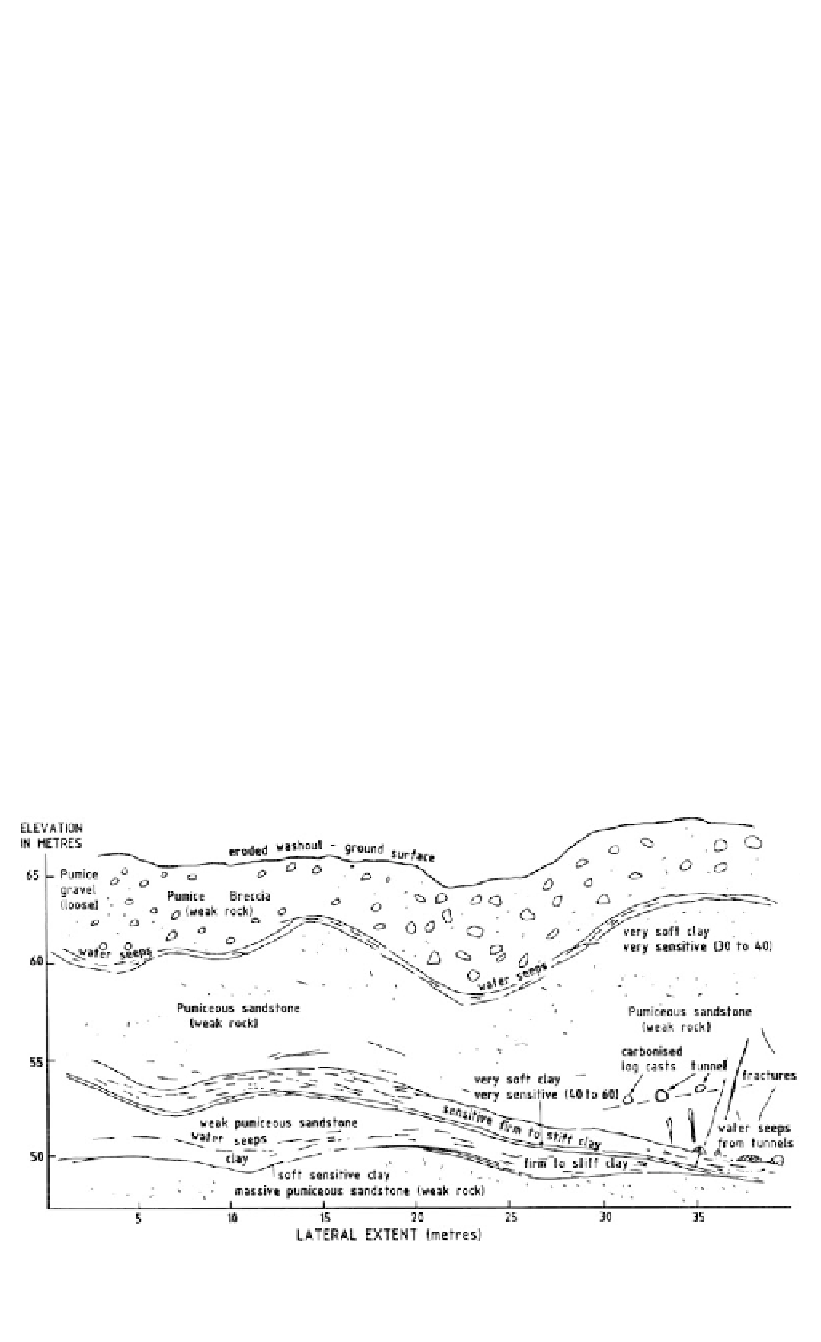Environmental Engineering Reference
In-Depth Information
Following or during their initial deposition, any of these types of deposit may be mod-
ified greatly by any or all of the following, which prevail in active volcanic environments:
- Faulting;
- Intrusion of further igneous material in plugs or dykes;
- Lava flows;
- Intense thunderstorm activity which causes erosion and redeposition, landsliding and
mudflows;
- Hydrothermal alteration and chemical weathering.
The alteration and weathering produce clay minerals which may include montmoril-
lonite, noted for its low shear strength, nontronite and allophane and halloysite which, in
some cases, are highly sensitive.
The air-flow and air-fall deposits have commonly been deposited on old land surfaces
with variable relief and covered by residual soil and weathered rock profiles. Prebble
(1983) notes that such deposition in the Taupo Volcanic Zone of New Zealand resulted in
permeable sand and gravel sized materials burying weak and relatively impermeable
residual clays in old valleys. Subsequent cycles of deposition and near-surface weathering
have resulted in a “valley-upon-valley” sequence of aquifers, interlayered with clayey
aquicludes which tend to be sensitive and collapsible (see Figure 3.10).
Pyroclastic materials are also found in near-vertical pipes or necks, called diatremes.
The Kimberley diamond pipe in South Africa and the Prospect Diatreme in Sydney, New
South Wales (Herbert, 1983) are examples. The materials in the diatremes comprise angu-
lar fragments of volcanic rock plus fragments of the underlying and surrounding rocks. It
seems likely that diatremes have been formed by explosive volcanic eruptions.
All of the above processes result in the extreme variability found in modern volcanic
deposits. In geologically old deposits, which have been deeply buried by later sedimenta-
tion and folded, faulted and uplifted, new defects and variabilities are introduced, but the
effects of compaction and consolidation can cause the strength contrasts between the var-
ious pyroclastic substances to be greatly reduced.
Figure 3.10.
Exposure of pyroclastic materials in the collapsed area of Ruahihi Canal, New Zealand
(Prebble, 1983).

